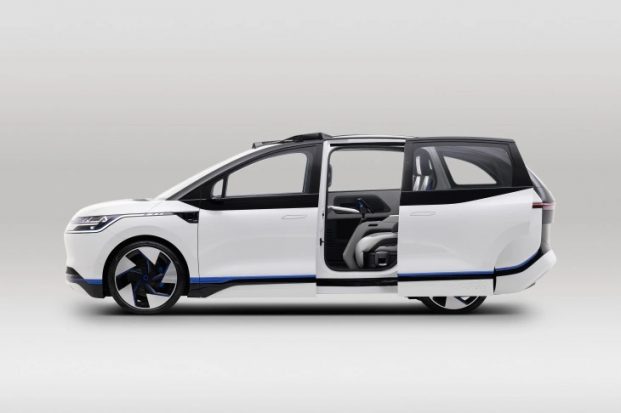Baidu has unveiled a new autonomous vehicle (AV) for its planned robotaxi service as General Motors (GM) and Ford have asked US regulators to let them deploy self-driving vehicles without steering wheels.
Baidu chief executive Robin Li said the robotaxis would be launched next year at a price of 250,000 yuan ($37,000) for the new model, compared with 480,000 yuan for the previous generation.
“This massive cost reduction will enable us to deploy tens of thousands of AVs across China,” Baidu’s chief executive Robin Li said at the Baidu World conference.
“We are moving towards a future where taking a robotaxi will be half the cost of taking a taxi today.”
The Apollo RT6 EV – a cross between an SUV and a minivan with a detachable steering wheel – will use eight lidars, a detection system similar to radar that uses pulsed laser light, and 12 cameras alongside the car.
ApolloGo Robotaxi Fleet
It will be operated by Baidu’s ApolloGo robotaxi fleet.
In the US, the National Highway Traffic Safety Administration (NHTSA) will consider the GM and Ford petitions to allow a limited number of vehicles to operate on US roads without required human controls.
Both carmakers want to deploy up to 2,500 vehicles a year, the maximum allowed under the law, for ride sharing and delivery services.
Neither seek approval to sell autonomous driving vehicles to consumers.
GM and its self-driving technology unit Cruise have disclosed that they petitioned the NHTSA for permission to deploy self-driving vehicles without steering wheels, mirrors, turn signals or windshield wipers.
Ford’s petition, submitted in July 2021, was previously undisclosed until the NHTSA publication on Wednesday.
Ford told the highway safety body that its self-driving vehicles “having active driving controls and communications would introduce an unacceptable risk to safety.”
- Reuters, with additional editing by George Russell
READ MORE:
Geely Launches Satellites for Autonomous Vehicle Navigation
Waymo Kicks Off Fully Autonomous Rides – The Information
VW Seen In Talks With Huawei on Autonomous Driving Unit























